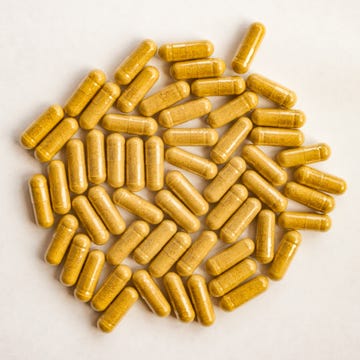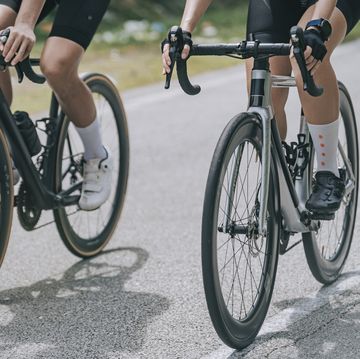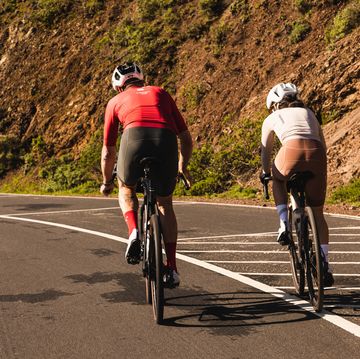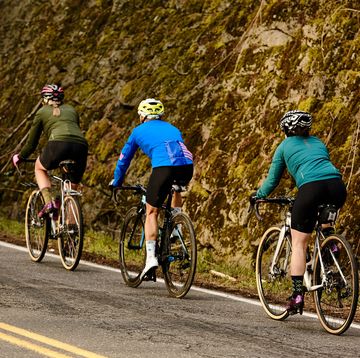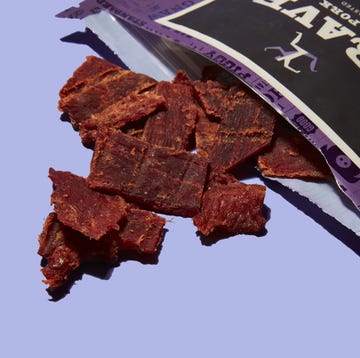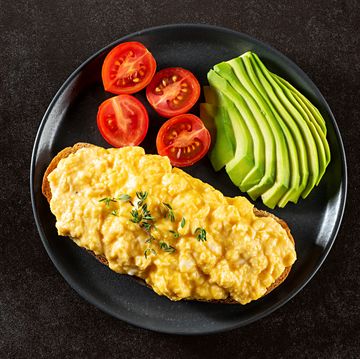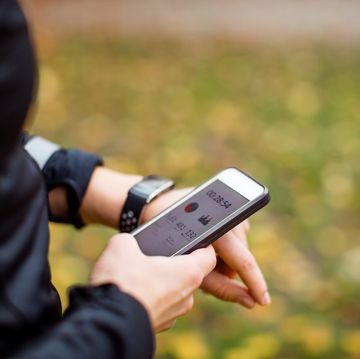Cycling is one of the best workouts you can do for your health and cardio fitness. It’s not only a low-impact workout that gets you outside, but regularly riding also offers a plethora of benefits, including better heart and brain health, boosted mood, longer life, and lowered risk of chronic diseases. Cycling also helps you burn calories.
But exactly how many calories do you burn while biking? Well, the answer to that question is a little more nuanced than rattling off the benefits of biking—and many people tend to overestimate the number.
For starters, relying on tools like calorie calculators that estimate energy expenditure using formulas based on METs (short for metabolic equivalent of task) and weight is partially to blame. Those numbers can be highly individual—or woefully inaccurate.
For example, cycling about 12 mph comes in at 8 METs, which means a 150-pound (68-kilogram) rider may burn more than 540 calories in an hour. That’s a strong “may,” though—especially if that rider is also pretty fit.
That’s because the fitter you are, the more efficient you are, and the less energy/fewer calories you use when you ride at a given pace. (File that under “life’s not fair.”) That figure also never takes into account the fact that you’d be expending 1 MET and burning 68 calories that hour even if you were doing nothing more strenuous than watching TV. So you’re not really burning an additional 540 calories in your day; the additional calories are less.
What to Know About Calories Burned Biking, as Told by Wearables
Everything is better now that we have electronic wearables tracking our every step and ride, right? Not exactly.
A Stanford study published in 2017 reported that not one of the seven devices they tested—including the Apple Watch, Fitbit Surge, Mio Alpha 2, Basis Peak, Microsoft Band, PulseOn, and the Samsung Gear S2—delivered an accurate number for calories burned. The most accurate one was off by 27 percent, and the least accurate one? Off by 93 percent. Yikes.
As lead researcher Euan Ashley, M.D., Ph.D., professor of cardiovascular medicine, genetics, and biomedical data science, told the Stanford Medical News Center, basing how much you eat on how many calories the device says you’ve burned is not the best idea.
Another study published in the JMIR mHealth uHealth in 2018 also concludes that, “mainstream devices are able to reliably measure heart rate, number of steps, distance, and sleep duration, which can be used as effective health evaluation indicators, but the measurement accuracy of energy consumption is still inadequate.”
A review from 2022 published in The Journal of Medical Internet Research that examined 65 studies on the accuracy of wearable trackers found similar results too. “None of the tested devices proved to be accurate in measuring energy expenditure,” the review states.
And just this year, a small study of 11 young male adults, published in the Journal of Science in Medicine and Sport, compared data from the Apple Watch 6 and Polar A370 to a metabolism analysis system and found these devices were “still inadequate” when it came to estimating calorie burn. According to the study, the Apple Watch tended to overestimate energy expenditure, while the Polar watch underestimated the numbers.
Garmin Connect, Strava, and other training apps might be a bit better, but they’re not perfect either, and the number they give you depends heavily on the information you give the app. The more detailed data you input about yourself, such as age, height, weight, gender, and max heart rate, the more accurately their internal algorithms can calculate your calorie burn. Wearing a chest-based heart rate monitor that is synced to your device also helps make your calorie count more accurate.
The Best Devices for Measuring Calories Burned Biking
Ultimately, the best way to know how many calories you’re burning as you rip down the road is by using a power meter. Power meters measure the work you’re performing and display it in kilojoules, which is a unit of work that takes into account that the human body isn’t 100-percent efficient when turning energy from your fuel stores into physical work, like pedaling a bike.
“Kilojoules and calories burned in cycling convert to a 1:1 ratio,” says USA Cycling level 1 elite coach Daniel Matheny, head coach at Matheny Endurance in Colorado Springs, Colordao. If your ride file says you performed 800 kJ of work, you can feel confident within a 5 percent margin of error that you burned about 800 calories.
There’s More to Biking, and Weight Loss, Than Calories
It’s extremely important to remember that even if you get the most accurate calorie data possible, there’s more to fitness and weight loss than that number. High-intensity interval workouts, for example, deliver a huge training effect by increasing your maximum oxygen consumption (VO2 max), raising your lactate threshold, and improving your economy, and this can translate to burning more fat at higher intensities. But HIIT workouts don’t ultimately burn an impressive number of calories while you’re doing them, often because they’re shorter in duration.
Even more importantly: If it’s weight loss you’re after, you’re better off becoming more mindful of the calories you consume—looking closely at the quality while keeping an eye on the quantity—than those calories burned.
Research has demonstrated that you can lose weight relatively easily without exercising, but it’s far harder to shed pounds without a healthy diet. For guidance, a recent landmark review of more than 135,000 people across five continents found that a diet that avoids excessive carbs (more than 60 percent of your daily intake) and includes about 35 percent of fat, as well as three to four servings of fruits, veggies, and legumes a day is your best bet for good health.
The Bottom Line: Bike for Reasons Beyond Calories
If tracking calories burned biking motivates you and doesn’t mess with you, then feel free to track! But a power meter or chest strap heart rate monitor will likely give you the most accurate numbers.
More importantly: Try not to obsess over the numbers and focus on the plethora of amazing benefits cycling offers, beyond energy expenditure. A boost in mood, enhanced overall health, the energy to keep up with your kids—you’ll gain all this and more from riding regularly. So celebrate those wins, too!



